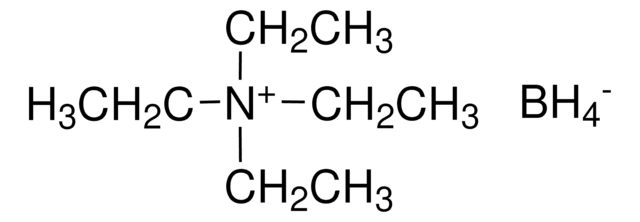230170
Tetrabutylammonium borohydride
98%
Synonym(s):
Tetra-n-butylammonium tetrahydridoborate
About This Item
Recommended Products
Assay
98%
form
solid
reaction suitability
reagent type: reductant
mp
124-128 °C (lit.)
SMILES string
[BH4-].CCCC[N+](CCCC)(CCCC)CCCC
InChI
1S/C16H36N.BH4/c1-5-9-13-17(14-10-6-2,15-11-7-3)16-12-8-4;/h5-16H2,1-4H3;1H4/q+1;-1
InChI key
GMBOFJFPOCGSOI-UHFFFAOYSA-N
Looking for similar products? Visit Product Comparison Guide
General description
Application
Signal Word
Danger
Hazard Statements
Precautionary Statements
Hazard Classifications
Skin Corr. 1B - Water-react 2
Storage Class Code
4.3 - Hazardous materials which set free flammable gases upon contact with water
WGK
WGK 3
Personal Protective Equipment
Certificates of Analysis (COA)
Search for Certificates of Analysis (COA) by entering the products Lot/Batch Number. Lot and Batch Numbers can be found on a product’s label following the words ‘Lot’ or ‘Batch’.
Already Own This Product?
Find documentation for the products that you have recently purchased in the Document Library.
Our team of scientists has experience in all areas of research including Life Science, Material Science, Chemical Synthesis, Chromatography, Analytical and many others.
Contact Technical Service










